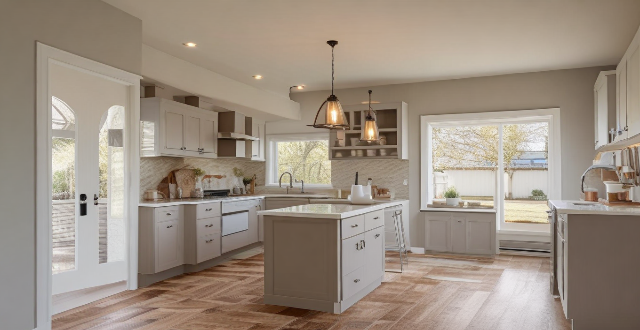When determining the ideal duration for at-home workouts, consider goals, fitness level, intensity, rest, time availability, and workout structure. Beginners may benefit from shorter sessions, while intermediate/advanced exercisers might need longer ones. High-intensity workouts can be shorter, while lower-intensity ones may require more time. Rest and recovery are crucial to avoid overtraining and injury. Quality over quantity is key, especially with limited time availability. Incorporating a warm-up, targeted exercises, and a cooldown/stretching period into your routine can make even shorter sessions effective.

How Long Should My At-Home Workouts Be to Achieve Maximum Efficiency?
When it comes to at-home workouts, the duration of your exercise session can vary depending on several factors. Here are some key points to consider:
1. Goals and Fitness Level
Your fitness goals and current level of fitness play a significant role in determining the ideal length of your workouts. For example:
- If you're a beginner looking to build a solid foundation, shorter sessions (around 20-30 minutes) focusing on basic exercises and proper form may be more beneficial.
- Intermediate or advanced exercisers might need longer sessions (45-60 minutes) to challenge themselves further and achieve their goals.
2. Intensity and Volume
The intensity and volume of your workouts also influence how long you should exercise. High-intensity interval training (HIIT) sessions, for instance, can be effective in as little as 15-20 minutes due to their high intensity. On the other hand, lower-intensity steady-state cardio or strength training may require more time (30-60 minutes) to reach the desired level of exertion.
3. Rest and Recovery
Rest and recovery are crucial components of any exercise program. Overtraining can lead to injuries and hinder progress, so it's essential to factor in adequate rest periods between sets, exercises, and workouts. This means that even if you have time for a longer workout, it might not always be the most efficient approach.
4. Time Availability
Your schedule and availability for exercise can impact the duration of your workouts. If you only have limited time each day, prioritizing quality over quantity is crucial. Shorter, more focused sessions can still yield great results if executed correctly.
5. Workout Structure
The structure of your workouts can help maximize efficiency regardless of their duration. Incorporating a warm-up, targeted exercises, and a cooldown/stretching period into your routine can make even shorter sessions effective.
Key Takeaways:
- Beginners: Start with shorter sessions (20-30 minutes) focusing on form and basic exercises.
- Intermediate/Advanced: Aim for longer sessions (45-60 minutes) to challenge yourself further.
- Intensity & Volume: High-intensity workouts can be shorter (15-20 minutes), while lower-intensity workouts may need more time (30-60 minutes).
- Rest & Recovery: Don't forget to include rest periods to avoid overtraining and injury.
- Time Availability: Quality over quantity; shorter, focused sessions can still be effective.
- Workout Structure: Incorporate a warm-up, targeted exercises, and a cooldown/stretching period into your routine.